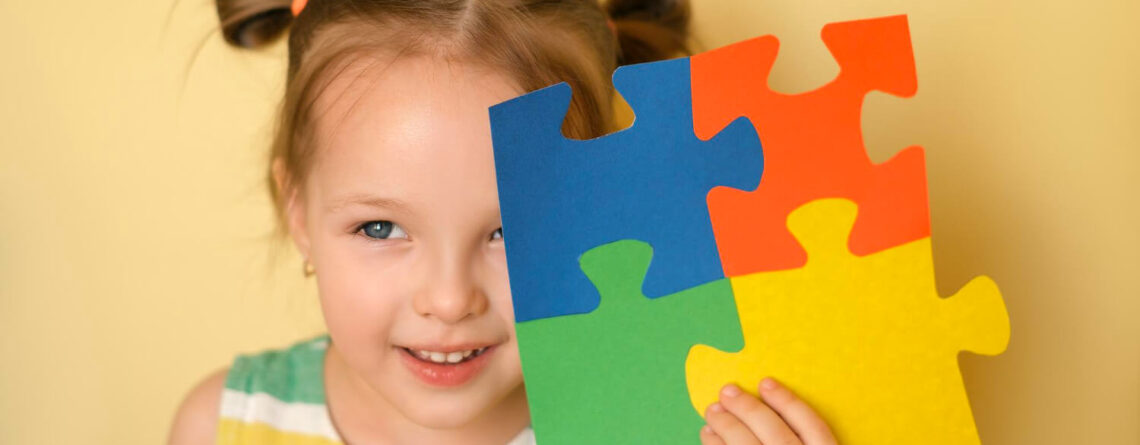Central nervous system (CNS) consist of brain and spinal cord. CNS tumors can be both benign and malignant. It is important to understand that even benign neoplasms of central nervous system pose a serious threat to child's health and can cause death.
Tumors that primarily grow from brain or spinal cord cells are called primary. Also, central nervous system can be affected by secondary (metastatic) tumors when tumor process spreads from other organs. Primary tumors of central nervous system are mostly found in children, metastatic tumors are extremely rare. According to statistical data, CNS tumors are a common form of childhood oncology and account for 20-25% of all diagnosed tumors in children. This localization of neoplasms is in the second place among children after hematology oncology malignant diseases.

f your child has a suspicion of central nervous system tumor or an already established such disease, and you do not know where to start to save a young life –feel free to contact specialists of Pediatric Oncology Department at Maimonides Multidisciplinary Medical Center. Our department operates in close cooperation with the best children's cancer centers in Israel.
Pediatric Oncology Project is managed by Dr. Serhiy Postovsky from Israel. Together with our head of the department Dr. Yury Tymoshchuk , he takes part in management of each individual clinical case directly from Israel. Also accompanying Pediatric Oncology Project of our medical center in the field of central nervous system neoplasms are such Israeli specialists as Prof. Shlomi Constantini and Dr. Rina Dvir. Thus, without leaving Ukrainian borders, you can get access to all advantages of modern and effective Israeli medicine.
We all know that cancer treatment, especially modern and effective one, is quite expensive and not all families can afford the necessary therapy. That is why Maimonides Medical Center works under the patronage of “Keren Or for our Child” the Charitable Foundation, which can fully or partially pay for necessary treatment for children with serious illnesses.
All doctors of our clinic are highly qualified in CNS oncology and have extensive practical experience. Most of them have repeatedly trained on basis of the world's leading oncology centers. In their work, they are guided only by modern protocols and recommendations for tumors of central nervous system treatment, and not by domestic methods of 20 years ago. At the same time, department practices an individual and patient-oriented approach. That is, examination plan and treatment scheme are by no means standard for all children, doctor takes into account all characteristics of a small patient – his age, health, type of tumor, its localization, stage of disease, concomitant pathology presence, child’s wishes and his parents.
Tumors of central nervous system are very complicated diseases, because as a result of their growth, any functions of body can suffer – vision, speech, hearing, sensitivity, mobility, work of all internal organs, etc. Therefore, a whole multidisciplinary team provides assistance to children with neoplasms of brain and spinal cord. Oncologists, neurologists, neurosurgeons, general surgeons, ophthalmologists, radiation therapists, chemotherapists, rehabilitation specialists, physical therapists, speech therapists, psychologists and other specialists work in the pediatric oncology department.
What are the symptoms of CNS tumors in children?
Often, tumors of central nervous system are diagnosed already in the late stages, when there are pronounced dysfunction symptoms of one or another part of brain and spinal cord. It is very important to notice this problem at early stage, as the success of treatment completely depends on it.
Parents should be alert to symptoms of CNS neoplasms and be aware of them:
- regular headache, especially in the morning and at night;
- frequent nausea and vomiting for no reason;
- chronic back pain;
- unmotivated weight loss, weakness, increased drowsiness, general malaise;
- lack of appetite;
- delayed mental or physical development;
- violation of sensitivity in a certain part of the body or motor function (muscle weakness, monoparesis, paraparesis, tetraparesis););
- convulsions;
- violation of coordination, swallowing, hearing, vision, speech, etc.;
- various mental disorders, for example, hallucinations;
- in young children, baby's soft spot (fontanelle) bulging, increased head circumference;
- dysfunction of pelvic organs – urinary incontinence or urinary retention, fecal incontinence, impaired sensitivity in perineum;
- cauda equina syndrome;
- atrophy of certain muscle groups.
If you notice one or more of symptoms listed above, don't waste time , consult a pediatric neurologist who will conduct a detailed examination and, if necessary, refer you to a neurosurgeon or a pediatric oncologist.
Types of CNS tumors in children
All CNS tumors can be divided into benign and malignant. Although the boundary of this division is quite conditional, since even benign neoplasms of central nervous system (slow growth, do not metastasize) pose a significant threat to child’s health and life. Firstly, they can compress vital centers in brain and spinal cord, secondly, they can destroy fragile nervous structures when they increase in size, even if slowly. Therefore, any neoplasm of central nervous system requires active treatment in case of detection.
The following types of CNS tumors can occur in children:
- Astrocytomas (or gliomas) account for almost half of all CNS cancer cases in children. Most often, the following subtypes of astrocytomas have to be diagnosed: giant cell, diffuse, pilocytic. The tumor grows from CNS cells called astrocytes. It can affect both spinal cord and brain. If tumor grows in spinal cord thickness, then its cervical region most often suffers with corresponding neurological symptoms development.
- Ependymomas are relatively benign tumors that grow from cells that normally line spinal cord and brain cavities (ventricles, spinal canal). When spinal cord is damaged, tumor is mostly localized in sacral and lumbar regions with development of corresponding symptoms and cauda equina syndrome. Such tumors metastasize very rarely and mainly with cerebrospinal fluid flow (cerebrospinal fluid).).
- Medulloblastoma is a malignant and aggressive brain tumor that often affects children. Refers to embryonic brain tumors and grows from undifferentiated embryonic cells. Such tumor is localized in posterior cranial fossa in cerebellum. Despite unfavorable prognosis, medulloblastoma can be completely cured. The main thing is timely diagnosis and a comprehensive approach to therapy.
- Craniopharyngioma is a rare tumor for childhood, occurs in children from 5 to 14 years and mainly in adults. This is a relatively benign neoplasm that is localized in pituitary gland. Danger is that when tumor grows, pituitary tissue is squeezed and corresponding endocrine disorders occur. So such tumor must be removed surgically.
- Glioblastomas are malignant neoplasms from glial cells. Glial are auxiliary cells of brain substance, they provide framework, supply, protection and corresponding metabolic processes for neurons (main cells). Such tumors are aggressive, grow quickly, and have an invasive type of spread. They are rare in children, they mainly affect adult patients.
- Neuromas are benign tumors from Schwann cells (schwannomas) that produce myelin, protective strarum of nerve fibers. Neuromas can affect auditory, optic nerve in brain or spinal nerve roots in spinal cord. It is relatively rare in children, mainly schwannomas grow in adults. Very often, these tumors do not cause any symptoms, so they often do not require treatment. But with intensive growth, they can squeeze cranial or spinal nerves and be accompanied by corresponding neurological symptoms. In such cases, neuromas are surgically removed.
- Atypical teratoid rhabdoid tumor (ATRT) is a tumor that also originates from embryonic tissues, like medulloblastoma, has a very malignant and aggressive course, affects spinal cord, as well as brain in cerebellum, brain stem region. This is a rather rare pathology, which mainly affects children under 3 years old. Tumor treatment is complex with application of neurosurgery, chemotherapy, targeted therapy, immunotherapy, radiation therapy, bone marrow transplantation, and other advanced techniques.
- Meningioma is a neoplasm of brain or spinal cord, which grows rather slowly and begins to manifest neurological symptoms as brain, spinal cord or its roots are compressed. It occurs quite often in children and has a favorable prognosis if treatment is started on time.

Diagnostic methods of CNS tumors in children
It is well known that the earlier cancer diagnosis is established, the better prognosis. Specialists of Maimonides Medical Center have all necessary modern diagnostic techniques for tumors of central nervous system, and new expert-class diagnostic equipment will make examination process not only effective, but also safe and comfortable.
If a certain diagnostic procedure is accompanied by pain or fear, then in children it is carried out only under general anesthesia, so as not to cause any psychological discomfort to child.
After detailed initial examination, complaints and anamnesis of illness and life collection, doctor will make up an individual plan for further examination to accurately establish the type of tumor, its localization, spread, stage of disease.
For this, a whole set of diagnostic tests is used:
- General clinical, biochemical, hormonal tests of blood and urine.
- Spinal puncture for various studies of cerebrospinal fluid.
- Ultrasound of brain in young children, vessels of head and neck, internal organs.
- Angiography of head and neck vessels.
- Modern methods of neuroimaging of spinal cord and brain – CT, MRI with and without contrast, PET-CT, PET-MRI, radiography of skull and spine, spinal cord myelography. With the help of these examinations, you can get a detailed image of neoplasm and its surrounding tissues, estimate the size of tumor, limits of its spread, make conclusions about which parts of brain or spinal cord are affected, plan the volume of future surgical intervention, and even get a 3D or 4D model of tumor for detailed study.
- Neurophysiological methods of studying brain and spinal cord function, for example, electromyography (EMG), electroencephalography (EEG).
- Tumor biopsy followed by pathomorphological examination to verify the type of tumor, study its individual characteristics.
Neoplasm biopsy s an extremely important stage of detailed diagnosis. Because only after pathomorphological examination of received biopsy specimens we can accurately establish its subtype, and with the help of various immunohistochemical and molecular genetic tests, certain types of mutations in tumor cells, certain receptors on their surface, which can later be used as a target for modern drugs (target drugs, immunobiological drugs), can be determined. Such test system for molecular genetic testing are the Foundation One panel and Caris Molecular Testing.
All biopsy specimens of our patients are sent for revision abroad to the best pathomorphological clinics in Germany, USA, and Israel. Thanks to such "molecular checks" , we are absolutely sure of diagnosis correctness and subsequent adequate and effective treatment tactics.

Treatment of CNS tumors in children
Tumors of central nervous system are serious diseases, and the earlier specific treatment is started, greater chances for a full recovery and a further healthy life. Taking into account all possible complications from various organs and systems in brain and spinal cord tumors, treatment scheme is planned not only by oncologist, but by a whole multidisciplinary team of specialists involving neurologists, neurosurgeons, vertebrologists, radiation therapists, chemotherapists, etc., and the entire process is generally managed specialist directly from Israel. Only by joint efforts is the only correct tactic chosen for each individual child and his clinical case.
A complex approach is used in treatment of CNS tumors. That is, treatment plan includes not only surgery, but also radiation therapy, chemotherapy and other treatment methods, depending on each individual child needs. Treatment scheme is selected for patient individually, that is, we do not use a template protocol for everyone, but form it for each child, based on specific clinical situation.
First of all, this is possible thanks to a whole multidisciplinary team work – all staff of Pediatric Oncology Department, all necessary narrow specialists work, who make consular decisions about the need for certain procedures.
The main stage in complex treatment of central nervous system tumors is surgery. Only the most qualified neurosurgeons provide surgeries on children with brain and spinal cord tumors. All interventions are minimally invasive and organ-sparing, that is, only tumor is removed, while healthy surrounding nerve tissue remains intact. To achieve this, surgeons use a variety of modern equipment and techniques (transsphenoidal access, stereotaxic neurosurgical units, gamma knife, X-knife, Da Vinci robotic surgical units, cryosurgery, etc.).
Radiation therapy is actively used in complex treatment. Radiation may be given preoperatively to reduce the size of primary tumor and risks during surgery. Also, radiation therapy may be prescribed after surgery to destroy every single malignant cell that may have remained after surgical treatment.
Also, in treatment of central nervous system tumors, a modern procedure of intraoperative radiation is used. That is, radioactive radiation source is brought directly to tumor bed during surgery. This procedure significantly improves the prognosis and disease relapses almost never occur.
Chemotherapy is also widely used in complex treatment of patients with CNS tumors. Prescribing chemotherapy courses, we take into account the type of tumor and its sensitivity to certain drugs, all treatment is carried out according to modern global protocols. Patients are prescribed only proven drugs from global manufacturers. So we are sure of their effectiveness and safety.
Along with classical chemotherapy, our patients are prescribed modern methods of tumors drug treatment – target therapy, immunobiological therapy. They purposefully act only on tumor cells, while not harming surrounding healthy nervous tissues, and this is their main difference from well-known chemo medicine.
Also, in Israel, autologous bone marrow transplantation has been recently used in complex treatment of CNS tumors after receiving intensive chemotherapy courses. In particular, such procedure is included in treatment protocol for atypical teratoid rhabdoid tumor (ATRO). This is a very aggressive tumor that can affect brain or spinal cord.
For this, high-dose chemotherapy is used, which, unfortunately, also destroys healthy cells in the patient's body – bone marrow. In order to be able to carry out such intensive chemotherapy and avoid corresponding complications from hematopoietic system, patient's bone marrow is taken before the course of chemotherapy treatment. Next, he receives the full spectrum of chemotherapy to destroy the tumor. In the next stage, he is transplanted with his own bone marrow, which takes root easily and begins to function normally. This is a unique treatment program to which patients of Maimonides Medical Center have access.
All patients of Maimonides MC have the opportunity to participate in clinical trials of experimental drugs or surgical procedures absolutely free of charge. For some of them, this is the only chance for recovery, especially for those children in whom standard treatment methods have turned out to be ineffective.

